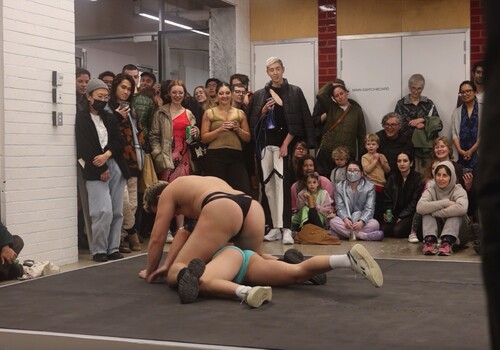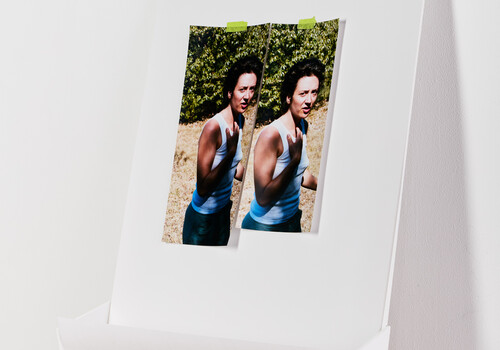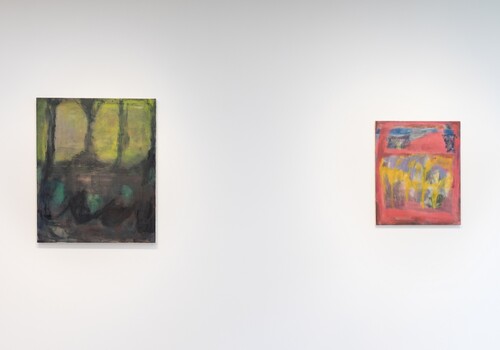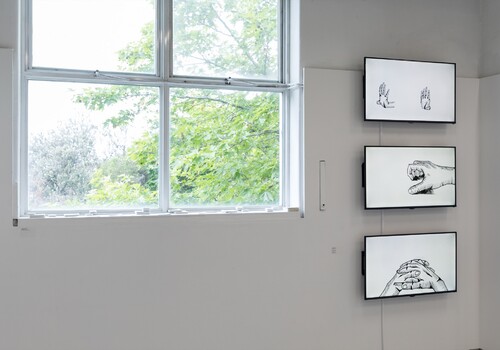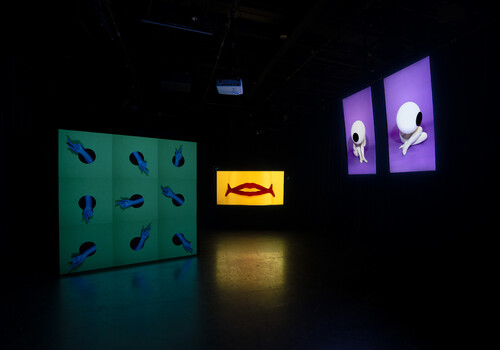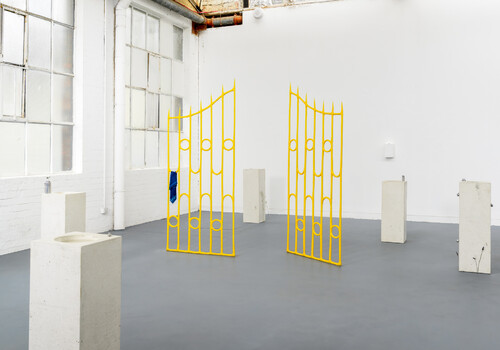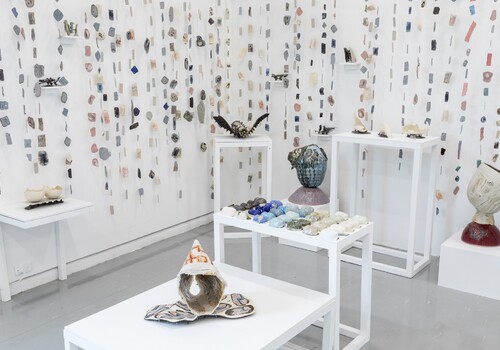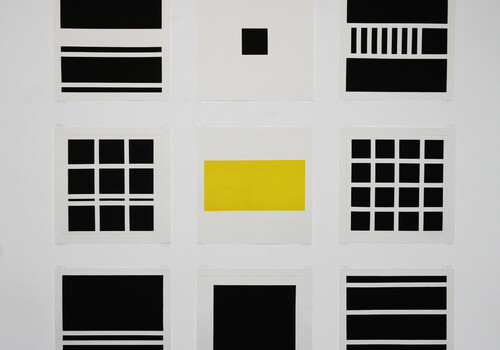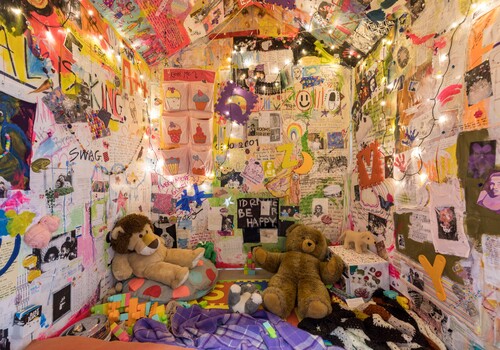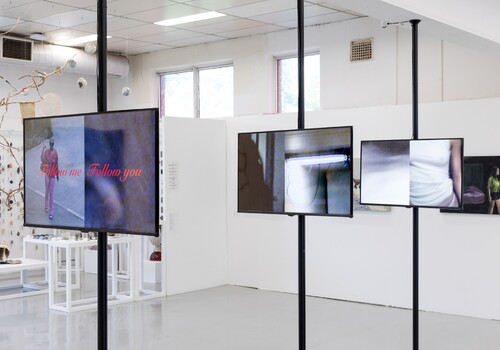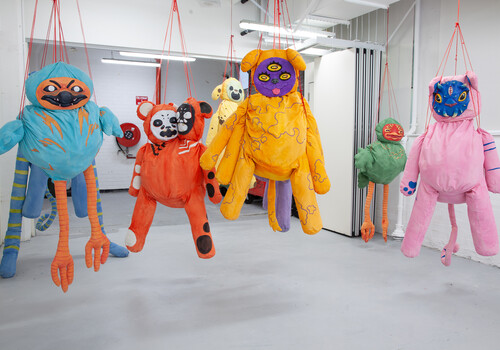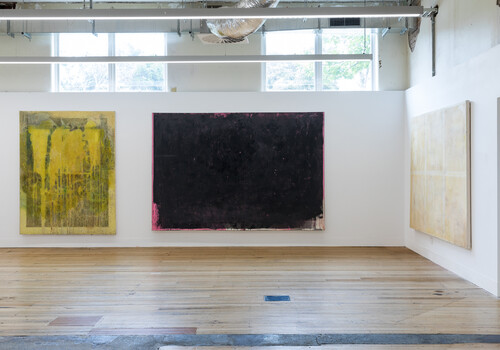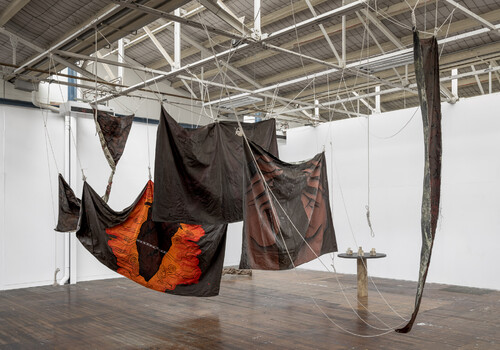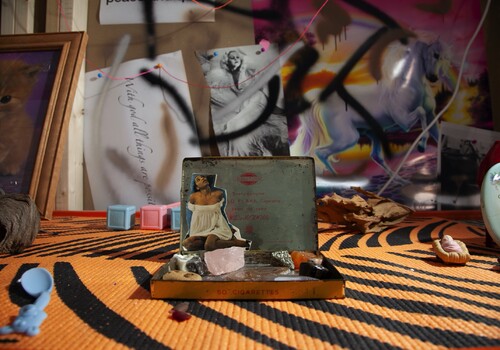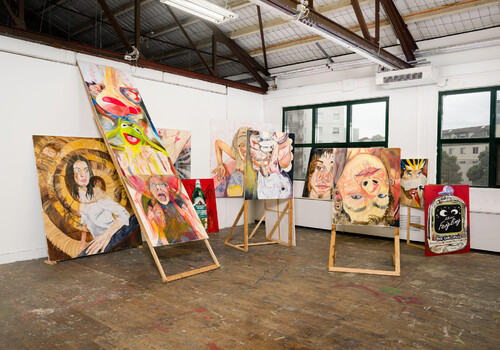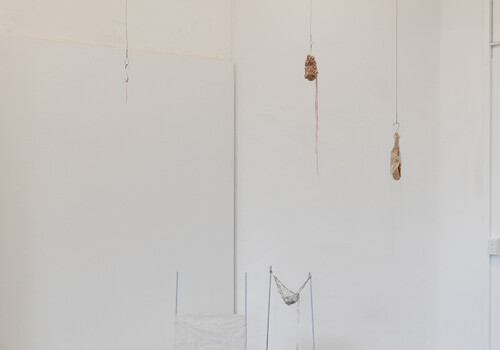Bachelor of Fine Art, MADA
By Cat Eyre
Time is but a stubborn illusion. And the characteristic co-temporality of contemporary art, evident in this year’s MADA Batchelor of Fine Art graduate exhibition, proves as much. At one end, Hiroki Matsumoto addresses lingering historical questions regarding originality and authorship in art, attributing originality solely to nature via his central embroidered piece untitled#3, which carries the quote by the Stoic Seneca, “all art is but imitation of nature”. He uses the Moorish Alhambra design, inspired by nature, to articulate his point in untitled#1, which he supports further with the materiality of his work. His use of MDF, an engineered and unabashed “fake”, and laser engraving, are the most contemporary elements of his work and remind us of the enduringness of the philosophical question, regardless of time or innovation, from ancient Rome to the “now” of the contemporary graduate art exhibition.
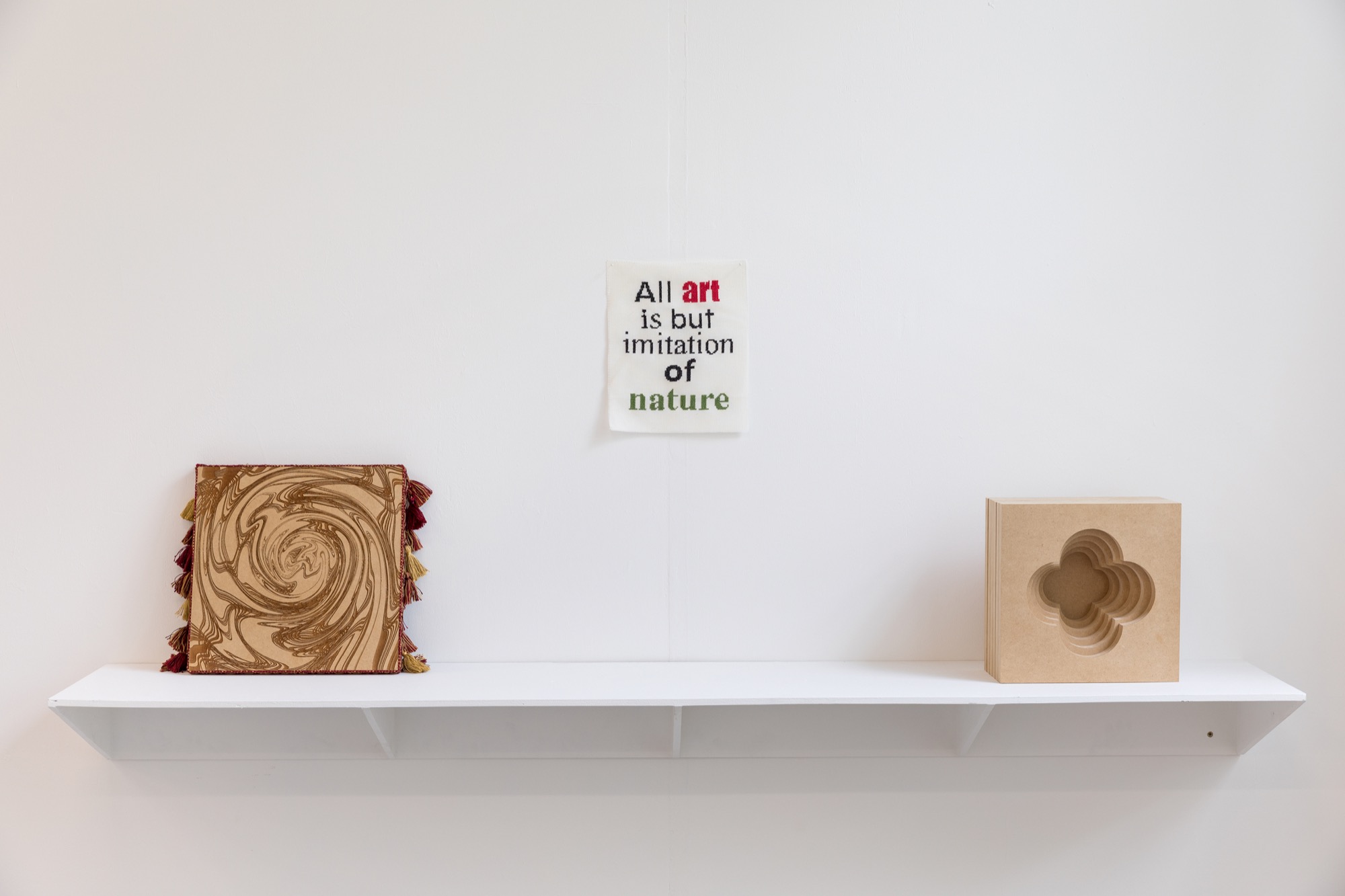
In the centre and bracketing the exhibition in a corridor in the far corner, Cam Wu’s works investigate childhood innocence and the complication and corruption it takes on in adulthood with absurdist humour. From the tan bark-covered floor of the central exhibition space of Fiat Money, Wu encourages the viewer to take a piece of tan bark as “legal tender” for a copy of her Fiat Money publication, mimicking imaginative childhood games of “shop” in the schoolyard. Bending down to place the payment in the collection box, your line of vision meets a video loop of various ticket slot payment machines receiving their accepted currency, the gold coin. To the left, a second video loop shows the twisting of a lunchbox apple in the playground until it breaks from its stem. In contrast to the tan bark, the repetitive images of ticket slot payment machines and their gold coin payment highlight the different currencies’ equal lack of intrinsic value. The corruption of value significance is further juxtaposed with the innocence twisting of the apple game, demonstrating how the different temporal stages of life bring new meaning, albeit absurd.

At the far end, Allie Domenica explores the reception of the written word by its surface, likening it to a form of absorption and how the spoken word is taken in via listening. The large chunks of text that dominate the central work, The Gilded Cage, however, are overtly political, highlighting the contrasting luxury experienced by some and the lack of freedom experienced by most. The state of flow writing expresses anger and dejection at today’s art market, which, while not ignoring its transactional nature from its inception in ancient Greece some 2,500 years ago, has become an out-and-out commodity market. Notably, Domenica takes aim at opaque sales and museum -esque freeports with their significant collections bringing new meaning to “inaccessible art”. Four works, Catch-(20)22…, Rhythmic values…, 26 October… and Between the tenth and eleventh twelfth…, flank the larger work, and by extension the viewer. Hanging back-to-back and two apiece from the ceiling, further writing and newspaper cuttings from Italian periodicals reference Putin’s illegal invasion of Ukraine, the latest iteration of Russia’s centuries’-long history of invading the country.
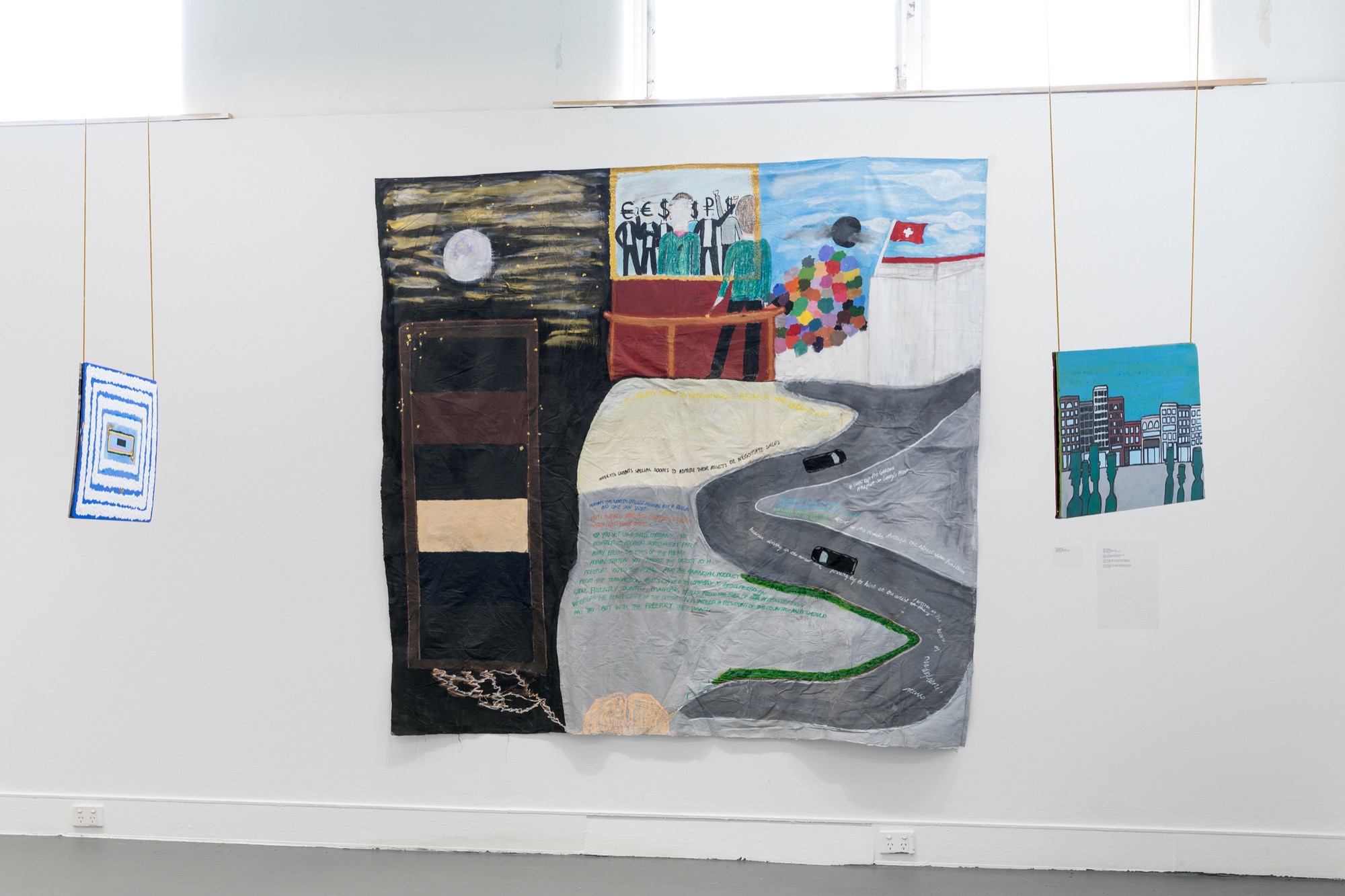
While wholly maddening, the persistence of issues from the past to the present justifies the need for them to be investigated by contemporary artists in some attempt at answer-seeking, which Matsumoto, Wu, and Domenica do with intelligence. Check their work out while you still have time…
Cat Eyre is completing a Bachelor of Arts (majoring in Art History and Spanish and Latin American studies) and a concurrent Diploma of Languages (Italian) at the University of Melbourne.
